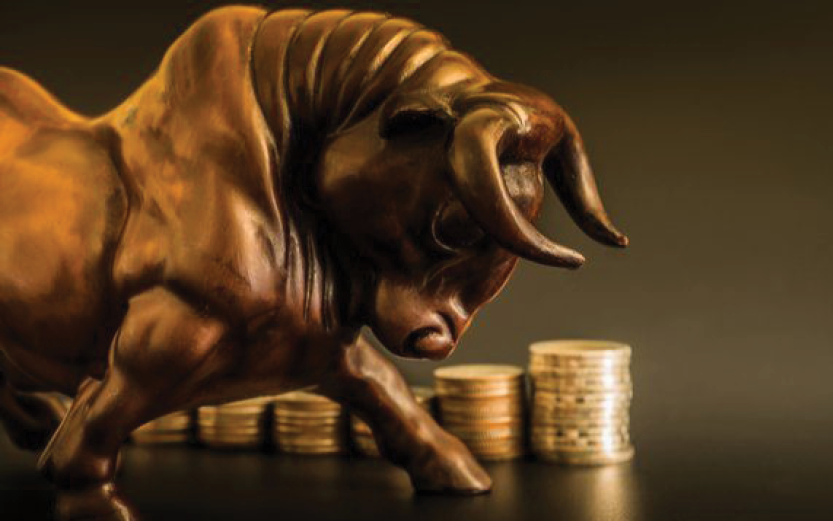Jeremy Grantham is the legendary former Chief Strategist of fund manager GMO. In his 82 years there’s very little he hasn’t seen in financial markets, and he rightly earned his legend status by calling the last three great stock market bubbles: the Japanese equities bubble of the late 1980s, the US dotcom bubble at the end of the 1990s and the 2008 GFC.
So it’s understandable people took notice when he greeted the new year with a frightening declaration:
The long, long bull market since 2009 has finally matured into a fully-fledged epic bubble. Featuring extreme overvaluation, explosive price increases, frenzied issuance, and hysterically speculative investor behaviour, I believe this event will be recorded as one of the great bubbles of financial history, right along with the South Sea bubble, 1929, and 2000.
Consider the counter factual
It sounds absurdly presumptuous to take the other side against such a storied investor, but I believe Grantham’s arguments warrant some context, and smart investors should always consider the counter factual.
First, Grantham has warned of an imminent US stock market collapse literally every year since the GFC and always for the same reasons: over extended valuations and the market’s reliance on central bank support. Grantham made a career out of identifying stock market bubbles, but even he conceded in an interview with Barron’s in 2015 that “for bubble historians…it is tempting to see them too often.”
Second, Grantham points to the S&P 500’s PE being in the top few per cent of its historical range while the economy is in the worst few.
With respect to the PE ratio, there have been spectacular changes in the macro, or big picture, settings for stock markets that have dramatically affected valuations. For example, inflation and interest rates have undergone the greatest ever reversal over the past 40 years. After interest rates peaked at close to 20 per cent under Fed President Volcker in the early 1980s, they have drifted lower and lower ever since, to the point where now we are becoming accustomed to negative government bond yields. Likewise, inflation is persistently below central bank targets.
I’ve argued before that it makes perfect sense those low yields have a profound influence on how shares are valued, especially for companies that offer higher levels of growth than the broader market. Whether it be through basing a discounted cash flow valuation on lower risk-free rates (bond yields) or the return premium offered by stocks over bonds, lower yields drive higher share prices.
Inflation’s effect on valuation
Given we’ve never seen a mix of yields and inflation like we’re seeing now, using historical references as your only valuation anchor makes no sense. A more convincing concern is the potential return of inflation because that will fundamentally change the valuation landscape, but there is no one who can give you a definitive answer as to what drives inflation. You need only look at the Fed’s ‘dot plot’, which started back in 2012 and records where each of its 12 board members and seven presidents think inflation and interest rates are headed. Despite having the best information available, and apparently being the best qualified in the US, they’ve never been close to right.
Another thing that has driven valuations on the US market up is that so-called ‘growth’ stocks, which are those companies whose earnings are growing faster than the index and therefore usually trade on higher PE ratios, have increased from 15 per cent of the overall index in the 1970s to now 77 per cent. By contrast, ‘value’ stocks, which rely more on general levels of economic growth and trade on lower PEs, account for commensurately less of the index.
In terms of the economy being terrible, recent economic data suggests otherwise. Like Australia, the US government injected about 13 per cent of GDP in brand new money in the form of COVID support, money that has to go somewhere. Sure, GDP fell 31 per cent in the March quarter of 2020, but it rocketed up 33 per cent in the June quarter. Business confidence is close to its equal highest in the last 25 years, unemployment is not far off its average for the post GFC/pre-COVID period, house prices are at an all-time high and there has been a record number of US companies upgrading earnings guidance in the first quarter. And the new Biden administration is preparing to spend another $1.9 trillion.
Lessons to be learned
By his own admission, Grantham’s past calls have typically been early. Getting out of Japanese and US stocks two years before the market peak cost his firm’s investors about 60 per cent each time. That offers a couple of salutary lessons. First, timing market tops is really challenging, especially if you rely on valuations to do it. And second, even if you’re worried about a market looking toppy, you don’t have to sell out of it entirely. You can simply reduce your holding gradually as it rises and switch your money into an asset class or market that doesn’t look as stretched, such as Australian, European or emerging markets shares.
There are undoubtedly pockets of the US market that look extreme right now, especially the speculative end of retail investors, but even that doesn’t apply to the whole market. When billionaires make bearish calls it’s hard to overcome our innate human bias that prioritises self-preservation and sees pessimists as smarter, but for your portfolio’s sake, it can pay to look for context.





